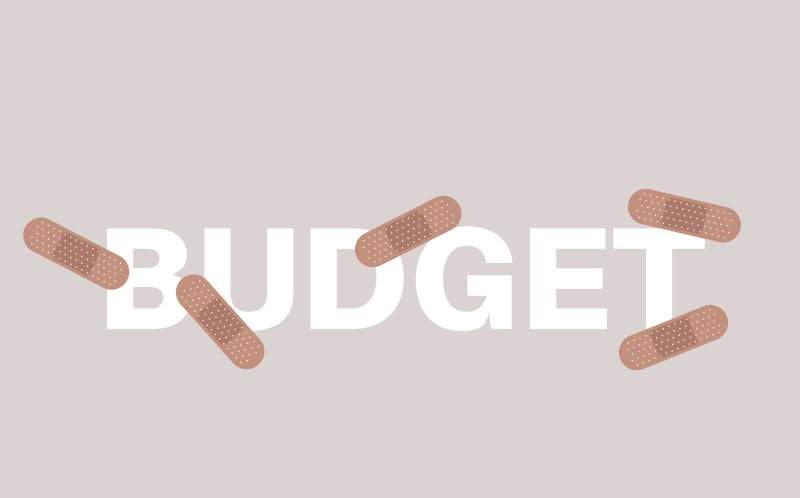Cuts to preventive health are a false economy: they lead to sicker people and sicker budgets
May 2, 2023
The nation is bracing for austere budgets. Grim foreshadowing has prepared us for a challenging federal budget. The Victorian Premier has warned of very difficult measures in his states budget, and NSW has delayed its budget while the new cabinet grapples with tough choices.
Budget expectation management is a perennial rite of autumn. But with the fiscal situation even more dire than usual, its probably serious this time. Grattan Institute analysis has shown that the federal budget has a deep structural deficit that may grow to $70 billion over the next decade. It will likely persist for decades after that unless spending is cut and taxes are raised. Many state budgets are also deep in the red.
News about some victims of impending cuts is starting to leak out. Last week, community health providers in Victoria were told there would be a cut to prevention programs that aim to reduce obesity and vaping. Premier Andrews has said that the funding was duplicated, and the cuts had been announced before. But spending on prevention in Australia should be going up, not down.
Australia lags far behind other countries in prevention spending, and far behind commitments that our own governments have made. We spend less than 2 per cent of our healthcare budget on prevention, well short of the average among OECD countries. Our spending is half the level of the UKs and a third the level of Canadas.
Australias National Prevention Strategy, agreed by the federal government and all the states, aspires to raise our spending to 5 per cent of the health budget by 2030. Were not even close, and the Victorian budget news is one sign that we might be about to go backwards.
Experience here and around the world shows that when budgets are cut, prevention is often the first on the chopping block. Prevention is less painful to slash than other kinds of healthcare, because the payoff from prevention spending is in the future, when current Treasurers and Ministers will be long gone. And while the winners from prevention arent around to lobby for investment, the industries that lose from prevention such as vaping and junk food companies are often happy to see prevention policy sidelined.
Prevention cuts couldnt come at a worse time. Chronic diseases cause the vast bulk of illness in Australia, accounting for 85 per cent of the disease burden. Almost half of us live with one chronic disease, and almost half of Australians older than 65 have two or more. And the problem is only getting bigger, with the burden rising by 38 per cent over the past three decades. Risk factors for chronic disease are rising fast too, including those that the Victorian programs were targeting: obesity and vaping.
Prevention can work. A lot of the chronic disease burden could be reduced through proven reforms and investments. Sustained efforts to reduce smoking and sun exposure in past decades have saved tens of thousands of lives. Studies have found that many prevention policies and services arent just cost-effective, they are a better investment than many tests and treatments that Australia routinely funds.
That means prevention savings are a false economy. Growing rates of chronic disease will cost billions of dollars a year to treat, and sap billions more from the economy due to lower workforce participation and productivity.
Australias persistent failure to invest in prevention shows that we need new structures that protect and increase prevention spending, while making sure it makes the biggest possible impact.
The Albanese Governments commitment to establish an Australian Centre for Disease Control (ACDC) is an opportunity to make some of these changes. The ACDC should have a strong focus on chronic disease prevention. Part of its role should be to guide government investment by assessing which regulations and prevention programs will have the biggest impact. Funding for these ACDC functions should be included in next months federal Budget.
Of course, not all prevention policies drain the budget. Regulatory reforms dont cost governments much to implement, and Australia is lagging leading countries on regulations for trans fats, salt, food labelling, and junk food advertising, to name just a few. Some of these policies even raise money there is a tax on sugar-sweetened beverages in 85 other countries.
But lots of effective prevention does require spending money, such as services that help people quit smoking or improve their diet. That means governments will have to make the right financial investments alongside regulatory reforms. Repeated strategies and commitments to increase prevention spending must be turned into actual funding plans.
The next health funding deal between the federal government and the states should include funding for prevention that increases over time. Australias last national prevention funding agreement was scrapped almost a decade ago and never replaced. Predictably, avoidable diseases and risk factors have kept rising in the meantime.
Balancing budgets is important and difficult, but prevention is one of the last places to look for savings. Every year that we fail to get serious about funding prevention we lock in more disease, disability, and death in decades to come. Health is one of our fastest growing costs, and its ultimately our biggest asset. Even when budgets are under pressure, we should avoid short-sighted decisions that will lead to sicker people, and sicker budgets, in the future.
